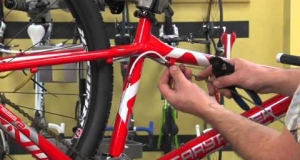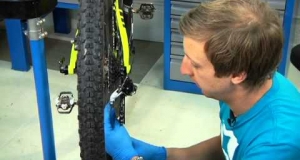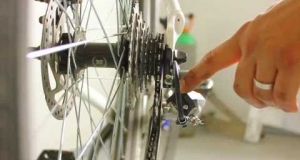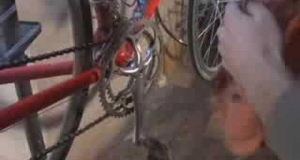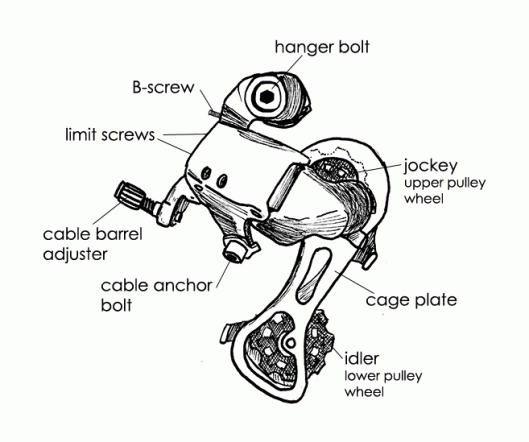Life is like a ten speed bicycle. Most of us have gears we never use.
- Charles M. Schulz
The rear derailleur is a complex and hard working component that keeps the drivetrain in balance. It aligns the chain to ride on a selected cog of the cassette meanwhile maintaining proper chain tension from the cassette back to the chainring.
Know the hardware: Rear derailleurs are built from different materials ranging from carbon composites to aluminum alloys. Check out the anatomy of a rear derailleur -
- Hanger bolt - mounts the component to the frame
- Cable Barrel adjuster - controls and maintains the shifter cable tension between the cage plate. There is another cable barrel adjuster on the shifter.
- Cable anchor bolt - clamps down on the shifter cable behind the barrel adjuster. The cable anchor bolt actually bonds the cable to the cage plate of the derailleur.
- Limit Screws - set all-important upper and lower ranges that the cage plate can swivel. The balance between limit screws and shifter cable tension accounts for almost all derailleur troubleshooting.
- Jockey pulley (Guide pulley) - keeps the chain fixed in alignment, and provides a fulcrum for the cage plate to rotate
- Idler pulley (Tension pulley) - maintains tension on the chain between the cassette and the chainring at all times. When the cage plate moves, tension is adjusted on the idler pulley which pulls or releases the chain from one sprocket to another.
- Cage Plate - The cage plate pivots on the Jockey pulley by the power of the shifter cable in one direction, and a tension spring in the other. Adjustment in the angle of the cage plate directly changes the angle and chain tension of the idler pulley. This adjustment is how a shift is initiated from riding on one cog of the cassette to another.
Maintenance Difficulty (4/10): While the rear derailleur is a complex component with moving parts, there isn't much to be intimidated by. If you can't reach a gear or the chain is falling off the cassette in either direction, it's time to check limiting screws and shifter cable tension. Get the bike on a repair stand and shift up and down the cassette as you make slight adjustments until you are comfortable with the derailleur performance.Emphasis on the slight, this component is about finding balance. Now might also be a good time to check your chain for damage/wear, as this could also lead to poor shifting performance. For everything you need to know about rear derailleur adjustments, check out our cool tutorials.
Explore all of your gears, friend.
